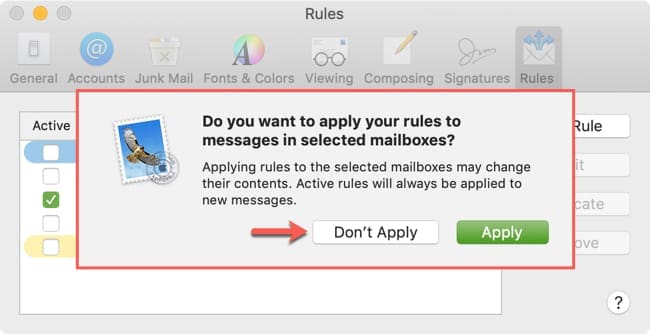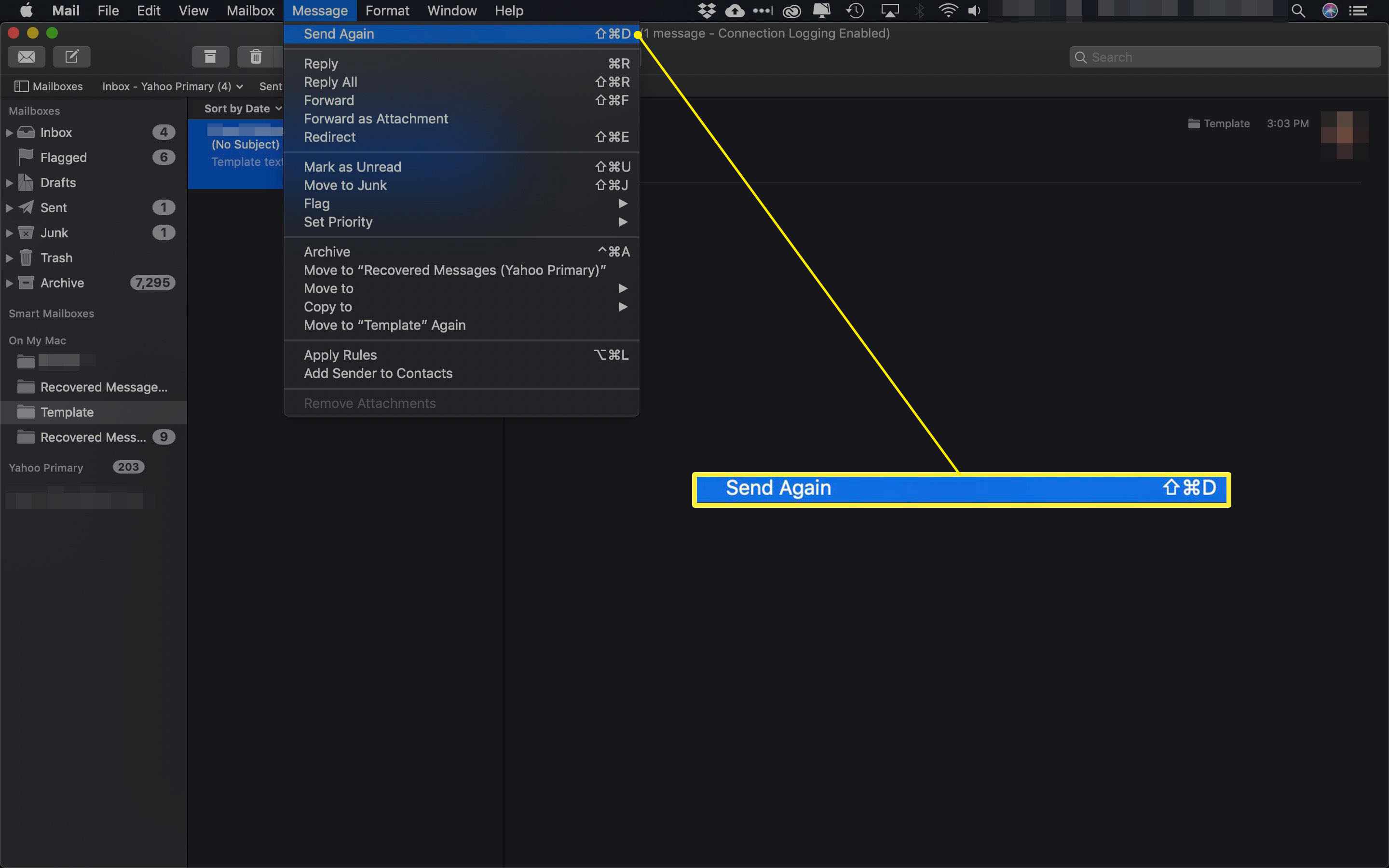


OS X MAIL RUN RULES SERIES
The same approach works for emails in folders, which can let you create a series of rules to clean up your email and go through applying them once. On your Mac, open Mail>Preferences and tap Rules, then tap Add.
OS X MAIL RUN RULES MAC
Simply select all the emails in your inbox and apply the rules every so often and those with conditions that only apply to older emails will also be run. There are two ways to create Rules in Mail, on your Mac and online at. This allows you to create a rule that trashes everything older than a week (or marks it as read if you prefer a less final approach). You can select emails and right-click to apply rules individually, though. These rules are all designed to trigger when an email comes in, and that’s how Mail works - it works through the rules for every email that comes into your inbox.
OS X MAIL RUN RULES HOW TO
In this post I will explain how to make rules that can filter, according to your definitions, those unwanted emails. Filtering unwanted messages in your Inbox is one of the best ways to optimize your time in relation to emails. Block Sender: Have anything from an email address automatically marked as read and moved to the trash. How to create junk e-mail rules in OS X Mail Junk messages.Keep in mind you have a bit of control here, too. Note: for a Mac to automatically update, it must be connected to power. Open 'System Preferences' and select 'Software Update'. There are many ways you can use Mail rules on your Mac. Here's how: From the menu bar on your Mac, select the Apple icon on the top left. The forwarding actions can let you either send a message along to a person or to a service like the OmniFocus or Things MailDrop addresses to filter some things directly into task management! There are 14 actions you can execute when an email meets the conditions you have selected, and this includes AppleScript. These are always combined with all or any, which you can select in the top-right above the conditions. There are 28 different conditions you can use to filter your email, and you can combine these by clicking the + icon on the right-hand side of any existing condition. This is very helpful as it means that the other rules won’t apply themselves to these emails. There are two actions: set the color of the message and then Stop Evaluating Rules. You could change the conditions to all, but in this example they would never match. Here the conditions are set to any, then the from addresses are a variety of email addresses Apple uses to send news. At the top, you see the conditions, and at the bottom you have the actions. This is a great sample rule to see how everything works. Unless you’ve played with these rules before, there will be one existing rule - News from Apple. Start in Mail’s preferences and then go to the Rules tab.

These run whenever your Mac is awake and connected to the internet and allow you to do anything from set the background color of emails in the list to executing AppleScript! Use Smart Mailboxes in Mail on Mac.A Smart Mailbox displays email messages that are stored inother mailboxes and that meet certain criteria you specify.For example, a Smart Mailbox could include all the messagesyou receive about a specific project, regardless of which mailboxes the messages are stored in.MacOS Mail has built-in rules and filters that you can use to manage all of your accounts. What is a smart mailbox folder on Mac Mail? Click on the folder to whichyou want to send the message or messages. Optionally, hold down the Command Key on your Mac'skeyboard, then click multiple messages to sort more than one email into a folder at once. In Mail, click on the email that you wantto sort. Herein, how do I organize emails in Apple Mail? To transfer the rules to another Mac, just dropthe ist file into the same folder ( Mail→ V2 → MailData) on the new Mac.Īdditionally, can you create folders in Apple Mail? Create a folder or subfolder Create a new folder: In Mail, make sure no folder is selected, thenclick the Add button next to Folders in the sidebar. That will copy your rules while leaving the original file right where it is. Hold down the Option key and drag the file to adifferent folder or an external drive. You will have to re-enableeach rule.Īccordingly, how do I export Mac Mail rules? Previously Mail was stored in V2 and/or V3 folder. Depending on whatversion OS you had installed previously, you could try restoringthe rule files from a backup. Rule files are stored in MailData folderin your User's Library/ Mail/V4 folder.


 0 kommentar(er)
0 kommentar(er)
